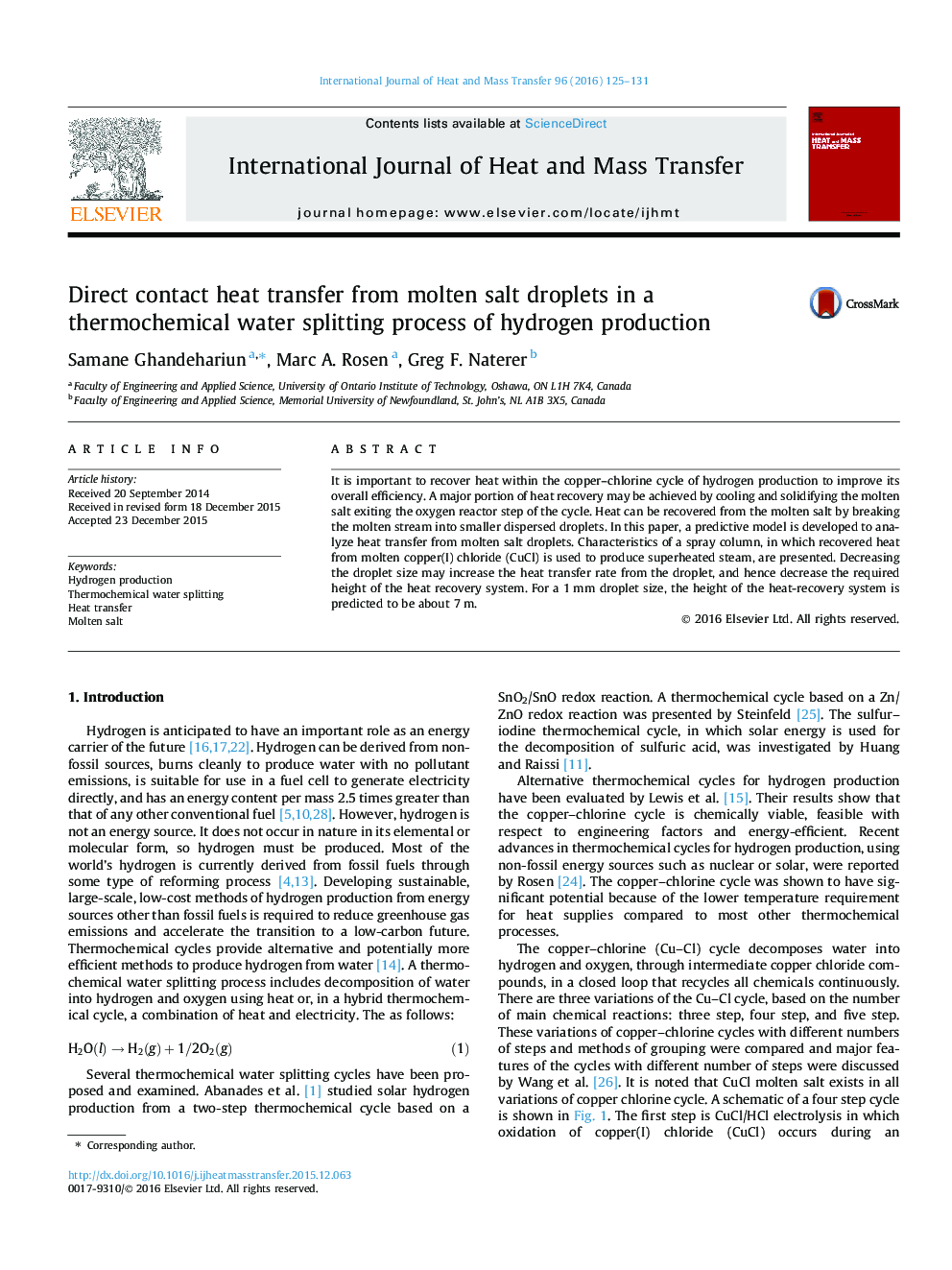| Article ID | Journal | Published Year | Pages | File Type |
|---|---|---|---|---|
| 7055777 | International Journal of Heat and Mass Transfer | 2016 | 7 Pages |
Abstract
It is important to recover heat within the copper-chlorine cycle of hydrogen production to improve its overall efficiency. A major portion of heat recovery may be achieved by cooling and solidifying the molten salt exiting the oxygen reactor step of the cycle. Heat can be recovered from the molten salt by breaking the molten stream into smaller dispersed droplets. In this paper, a predictive model is developed to analyze heat transfer from molten salt droplets. Characteristics of a spray column, in which recovered heat from molten copper(I) chloride (CuCl) is used to produce superheated steam, are presented. Decreasing the droplet size may increase the heat transfer rate from the droplet, and hence decrease the required height of the heat recovery system. For a 1Â mm droplet size, the height of the heat-recovery system is predicted to be about 7Â m.
Related Topics
Physical Sciences and Engineering
Chemical Engineering
Fluid Flow and Transfer Processes
Authors
Samane Ghandehariun, Marc A. Rosen, Greg F. Naterer,
